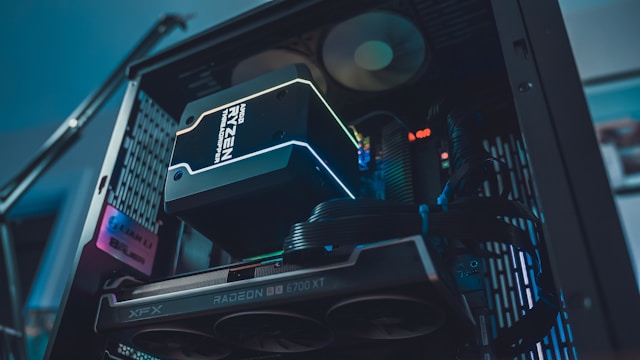Smartwatch Buying Guide: Features, Prices & OS Explained

Your Ultimate Guide to Buying a Smartwatch
So, you’re thinking about buying a smartwatch? Excellent choice! They’ve become incredibly popular – and for good reason. They offer a convenient blend of fitness tracking, notifications at a glance, and often even the ability to make calls or payments right from your wrist. However, with so many options available now, navigating the market can feel overwhelming. This guide will break down everything you need to know before taking the plunge, covering features, price ranges, operating systems, and more.
Understanding Smartwatch Features
First things first: What do you *want* your smartwatch to do? The answer dictates a lot about which model is right for you. Let’s explore some common features:
- Fitness Tracking: Most smartwatches offer basic activity tracking like steps, distance traveled, calories burned, and active minutes. More advanced models include GPS for accurate workout mapping, heart rate monitoring (often continuous!), sleep analysis, blood oxygen saturation (SpO2) measurement, and even specialized modes for specific activities like running, cycling, swimming, or yoga.
- Notifications: Receiving notifications for calls, texts, emails, and app alerts on your wrist is a core function. You can usually customize which apps send notifications.
- Smart Home Control: Many smartwatches integrate with popular smart home platforms like Google Assistant and Amazon Alexa, allowing you to control lights, thermostats, and other devices directly from your wrist.
- Music Playback: Some smartwatches have built-in storage for music or can connect wirelessly to headphones, letting you listen to music without needing your phone.
- Contactless Payments (NFC): Paying with your watch is incredibly convenient thanks to NFC technology. Services like Apple Pay, Google Pay, and Samsung Pay are commonly supported. Note: Compatibility depends on your region and bank.
- GPS: Crucial for accurate workout tracking without needing to carry your phone. It also enables navigation features.
- Cellular Connectivity (LTE): This allows the smartwatch to function independently of a smartphone, making calls, sending texts, and accessing data directly over a cellular network. Naturally, this requires an additional subscription plan.
- Voice Assistant Integration: Seamlessly interact with your voice assistant (Siri, Google Assistant, Alexa) for information, commands, and more.
Price Points & What You Get
Smartwatches span a wide range of prices. Here’s a general breakdown:
- Budget-Friendly ($50 – $150): Expect basic fitness tracking (steps, calories), notifications, and limited smart features. You might find models with color displays but often they are LCD rather than more vibrant AMOLED screens. GPS may be absent. Examples include some Xiaomi/Amazfit models and entry-level Fitbit devices.
- Mid-Range ($150 – $350): This is where you start to see a significant jump in features. You’ll find continuous heart rate monitoring, more accurate fitness tracking with GPS, better displays (often AMOLED), NFC for payments, and potentially more advanced health metrics like SpO2. Examples include the Fitbit Versa series, some Garmin models, and certain Samsung Galaxy Watch options.
- Premium ($350 – $600+): Top-tier smartwatches offer the best of everything: premium build quality (stainless steel or titanium cases), vibrant AMOLED displays, advanced health sensors (ECG, body temperature sensing), cellular connectivity options, and seamless integration with their respective ecosystems. Think Apple Watches, high-end Samsung Galaxy Watches, and flagship Garmin watches.
Operating Systems: Choosing Your Ecosystem
The operating system of a smartwatch is crucial because it determines compatibility with apps, features, and your smartphone. Here’s a look at the major players:
- watchOS (Apple Watch): Exclusively for Apple iPhones. Offers tight integration with iOS, excellent app ecosystem, smooth performance, and robust health tracking features. Known for its ease of use and stylish design. However, it *only* works with iPhones.
- Wear OS by Google (Android Wear): Compatible with both Android and iOS smartphones (though functionality can be limited on iOS). A growing app ecosystem, good integration with Google services, and increasingly sophisticated features. Google is actively improving Wear OS.
- Tizen (Samsung Galaxy Watch): Samsung’s own operating system, known for its smooth performance, beautiful displays, and intuitive user interface. Works best with Samsung phones but offers decent compatibility with Android devices. Note: Samsung has transitioned to using Wear OS powered by Google on their newest models.
- Proprietary Operating Systems (Garmin, Fitbit, Amazfit): Many fitness-focused brands use their own operating systems to optimize battery life and tailor the user experience for specific activities. While these often lack a vast app ecosystem like watchOS or Wear OS, they tend to excel in areas like GPS accuracy and long battery life.
Battery Life: A Critical Consideration
Smartwatch battery life varies dramatically depending on the model and usage patterns:

- Basic Fitness Trackers: Can last for several weeks or even months on a single charge.
- Mid-Range Smartwatches: Typically offer 3-7 days of battery life with moderate use.
- Premium Smartwatches with LTE and Always-On Displays: Expect 1-3 days of battery life, possibly less if you heavily utilize features like GPS or cellular connectivity.
Always-on display modes significantly impact battery life. Disabling this feature can substantially extend the time between charges.
Key Factors to Consider Before Buying
Beyond the basics, here are some additional factors to keep in mind:
- Size and Comfort: Smartwatches come in various sizes. Ensure the watch fits comfortably on your wrist and isn’t too bulky.
- Water Resistance: Look for a rating of at least 5 ATM (50 meters) if you plan to swim with your smartwatch.
- App Ecosystem: If apps are important to you, research the available apps for the operating system you’re considering.
- Compatibility: Double-check that the smartwatch is compatible with your smartphone’s operating system (iOS or Android).
- Design and Style: Smartwatches are accessories too! Choose a design that matches your personal style.
Conclusion
Buying a smartwatch can enhance your daily life in numerous ways, from keeping you connected to tracking your fitness goals. By carefully considering the features, price points, operating systems, and other factors outlined above, you’ll be well-equipped to choose the perfect smartwatch for your needs and budget.



